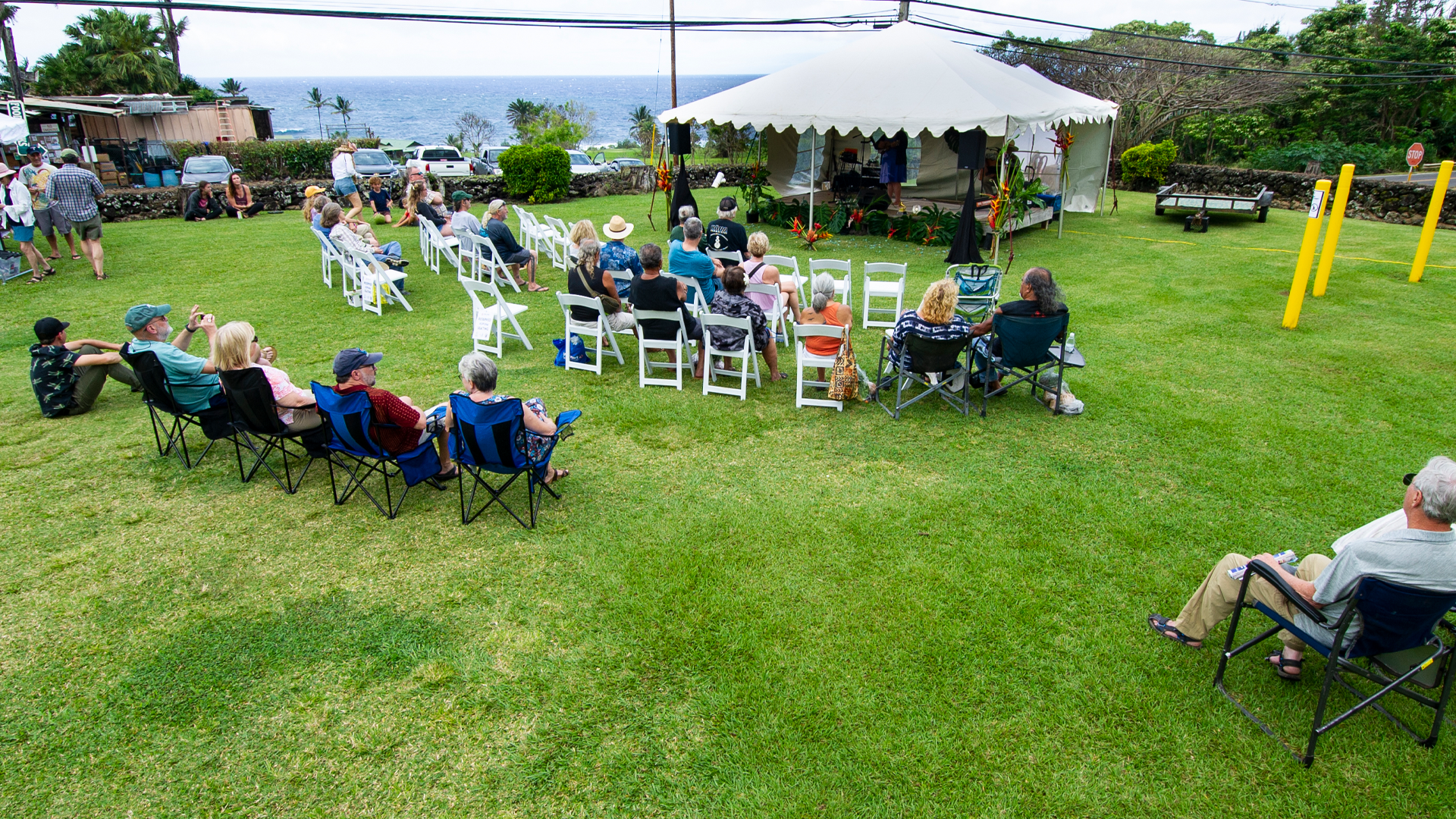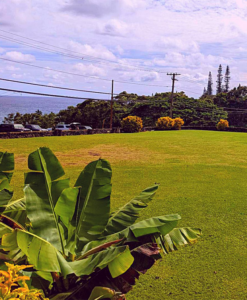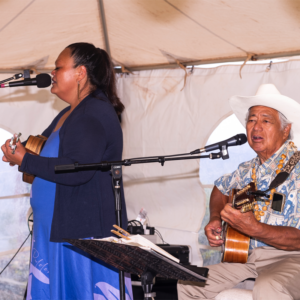
Hāna is a tiny enclave on the eastern coast of the Hawaiian island of Maui that has a unique culture shaped by its profound isolation. A two-hour drive along the breathtakingly scenic yet treacherous Hāna Highway with its 620 curves and 59 bridges, is the only way to reach this Hawaiian community of 1,900 residents.
“Hāna has a very unspoiled terrain. The town does not allow for development — there are no large resorts and golf courses — so you get people who are really true to their roots. There are subsistence fishermen and farmers and people who genuinely live off the land,” says Becky Lind, Executive Director of Hāna Arts, a nonprofit that offers arts workshops and events to enrich the lives of Hāna residents and provide them with more opportunities for income. Hāna Arts is presenting the inaugural Levitt AMP Hāna Music Series — the first time Levitt is in Hawaii — to revitalize the local farmer’s market, encourage locals to come together, provide a platform for local artisans and small business owners, and give visitors a reason to stay awhile.
While the residents Hāna Arts serves are spread along a 30-mile stretch of coastline, Lind says they share an incredibly strong sense of community. But she says the downside of Hāna’s remote location is unreliable internet and limited opportunities for education, business, and arts and culture. The local per capita income is only about two-thirds that of the state of Hawaii, with around 80 percent of the roughly 400 students at Hāna High and Elementary School qualifying for free or reduced lunch.

The grass lot near Hāna Ranch Restaurant, the location of the Levitt AMP Hāna Music Series
Since the closest music venue is located on the other side of the island, Hāna Arts has formed partnerships over the years to bring in various musicians to conduct both outreach at the school and perform for the community. The organization also stages biannual festivals to showcase student and community performers and a popular talent show at Hāna Bay that last year exceeded pre-pandemic attendance.
Founded in the 1990s to offer visual arts classes at the school, Hāna Arts now provides a panoply of activities for all ages. Its event calendar includes workshops in ceramics, hula, ukulele, ballet, lei-making, and screen-printing.
“We want to teach creativity and diversify the employment base. Right now, there’s one boutique hotel and one ranch and a lot of people work at those two places. Both of them struggle and every time they change hands everybody gets let go,” says Lind. “We want people to exercise being creative so that when those things happen, we have ceramicists and musicians and sound techs and videographers who have new ways to make a living wage.”
Hāna Arts saw an opportunity for local artists to sell their wares at the Hāna Farmer’s Market, which started on a grass lot below Hāna Ranch Restaurant just weeks before the Covid pandemic forced everything to shut down. The market came back the next year as a weekly Friday afternoon event with around 30 vendors, and Hāna Arts provided a platform for makers to sell their crafts on the first Friday of each month. But once Covid-related subsidies for families dried up, fewer visitors were able to afford the goods at the market and the number of vendors dwindled.
This summer’s Levitt AMP concerts will bring new energy to the farmer’s market. Though not large, the grassy lot has a picturesque view of the Pacific Ocean, and patrons of Hāna Ranch Restaurant can also enjoy the free concerts. Despite an unexpected downpour before the first concert in May, around 400 locals came to hear slack-key guitarist George Kahumoku, Jr., who has won multiple GRAMMY awards, and Hāna native and falsetto singer Lahela Park.
Lind is excited about contemporary and diverse acts coming soon to Levitt AMP Hāna, such as pop-folk singer-songwriter player Paula Fuga and Andrew Bees, lead singer of Black Uhuru, a GRAMMY-winning reggae band. Many of the concerts will also feature youth and adult hula performances and local musicians.

Four-time GRAMMY winner and master slack key guitarist known as “Hawai’i’s Renaissance Man” George Kahumoku Jr. opened the Levitt AMP Hāna Music Series in May, which also featured Hāna native and falsetto singer Lahela Park.
“Music is the woven mat of community. Families come and dance and sing together and it builds relationships. By watching local musicians and keiki [youth] performers along with the incredible acts the Levitt series is bringing in, I want to see the community’s sense of pride and confidence and connection grow. I want their aloha to get amplified through these concerts.”
Organizers are capitalizing on Hāna’s lovely weather by spreading out the Levitt AMP concerts all the way to October. Hāna Arts will have an artists’ booth featuring creations from a wide variety of local artists at the shows. At the first one in May, resin earrings made by a sixth grader, ceramics by high school students, and pottery and screen-printed t-shirts were all on sale.
Ultimately, Lind hopes the concert series draws more than just locals. Visitors traveling the Road to Hāna are exceeding pre-pandemic numbers and easily top a million a year. They come for the lush rainforests and flowing waterfalls or perhaps to witness the stunning volcanic landscapes and sublime sunrises at Haleakala National Park. Few make more than a rest stop at Hāna.
“Tour buses that come through on the road to Hāna bring their own lunches, leave trash behind, use the bathrooms, and clog up the streets. The markets and concerts are giving them a place to go. They may have a tight schedule, but spending 30 minutes to get some local art and food adds to a more genuine experience as well. Over here you can get real shell earrings made by a local artist who collected those shells on a nearby beach.”
She hopes the Levitt AMP Music Series will help build infrastructure and buzz to eventually attract those who truly want to experience Hawaiian culture.
“The long-term goal is to uplift Hāna so it’s known as an arts community where tourists can come with deep respect and get authentic cultural experiences,” says Lind. “That way we can have a community that can make a living wage doing things they love while being able to stay in their hometown with their families and perpetuate their cultural traditions.”
